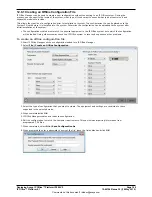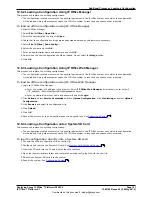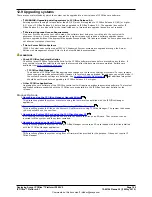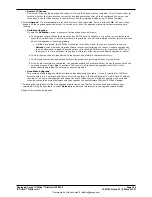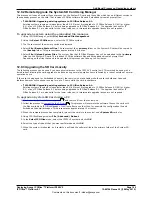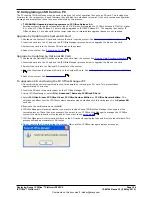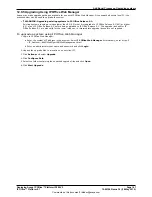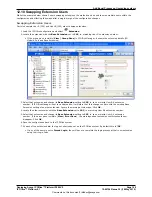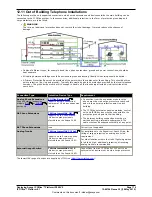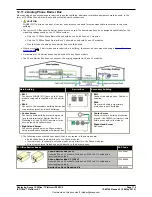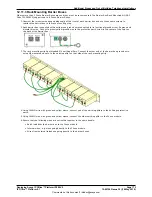
Deploying Avaya IP Office™ Platform IP500 V2
Page 158
15-601042 Issue 30j (18 May 2015)
IP Office™ Platform 9.1
Comments on this document? infodev@avaya.com
12.7.4 Defaulting Security Using the Boot Loader
Read and note the warnings regarding
defaulting the security settings
before using this process.
·
WARNING
Use of the RS232 port should only be performed if absolutely necessary and only if the actions cannot be
completed using IP Office Manager or IP Office Web Manager. In all cases, you must make every effort to ensure
that you have a backup copy of the system configuration.
To default a system's security settings via Boot Loader
This process defaults the IP Office security settings and its configurations settings.
1. Ensure that you have a backup copy of the IP Office's configuration before performing this action. If a copy of the
configuration cannot be downloaded using IP Office Manager, check the IP Office Manager application directory for
previously downloaded configurations.
a. Use IP Office Manager to download an up to date copy of the configuration. If that is not possible, check in the
IP Office Manager application folder for a previous copy of the configuration.
b. Using IP Office Manager, select File | Open Configuration.
c. Using the Select IP Office Menu, locate and select the IP Office system. Click OK.
d. Enter the name and password for a service user account on that IP Office. Click OK. IP Office Manager will
receive and display the configuration from the IP Office.
·
If not already done, this action creates a BOOTP entry in IP Office Manager for the IP Office system.
·
This action also confirms communication between the IP Office Manager PC and the IP Office prior to any
following process.
e. Select File | Save Configuration As... and save a copy of the configuration file onto the PC.
2. Attach the serial cable between the PC and the RS232 DTE port on the IP Office control unit.
a. Start the terminal program on your PC. Ensure that it has been setup as listed in
RS232 DTE Port Settings
.
Within a HyperTerminal session, the current settings are summarized across the base of the screen.
b. Arrange the program windows so that the Terminal program and IP Office Manager TFTP Log are visible at the
same time.
c. Switch off power to the IP Office control unit.
d. Power on the control unit and press the escape key every second until you get a Loader message. Below is an
example.
P12 Loader 2.4
CPU Revision 0x0900
e. Enter AT (note upper case). The control unit should respond OK.
f. If an OK response is not received, check the settings of your terminal program and repeat the process above.
3. To erase the current configuration in RAM memory enter AT-X3. A typical response is Sector Erases (Config)
followed by a series of OK responses.
4. To erase the backup configuration stored in non-volatile memory enter AT-X2. A typical response if Sector 2
Erase (NV Config) followed by OK. IP Office 403 only: If running an IP Office 403 control unit, also enter AT-X4.
5. Switch power to the control unit off and then back on. Within the terminal program you should see various
messages as the control unit performs various start up tasks.
6. Close the terminal program session.
7. IP Office Manager can now be used to alter and then upload an old configuration file or receive and edit the control
unit's now defaulted configuration.
155
360

















